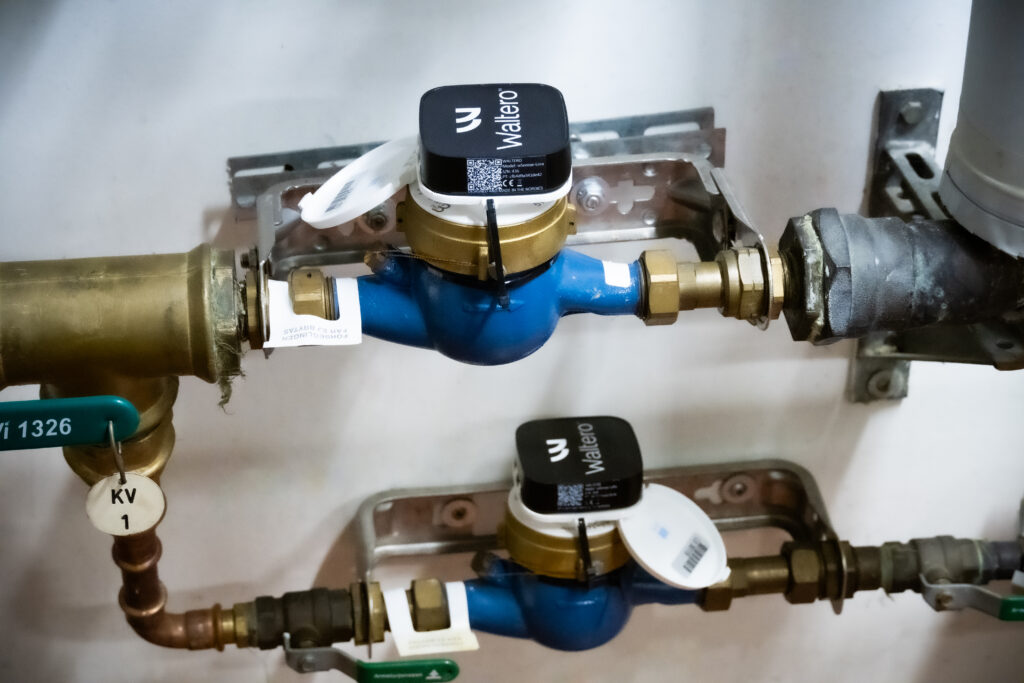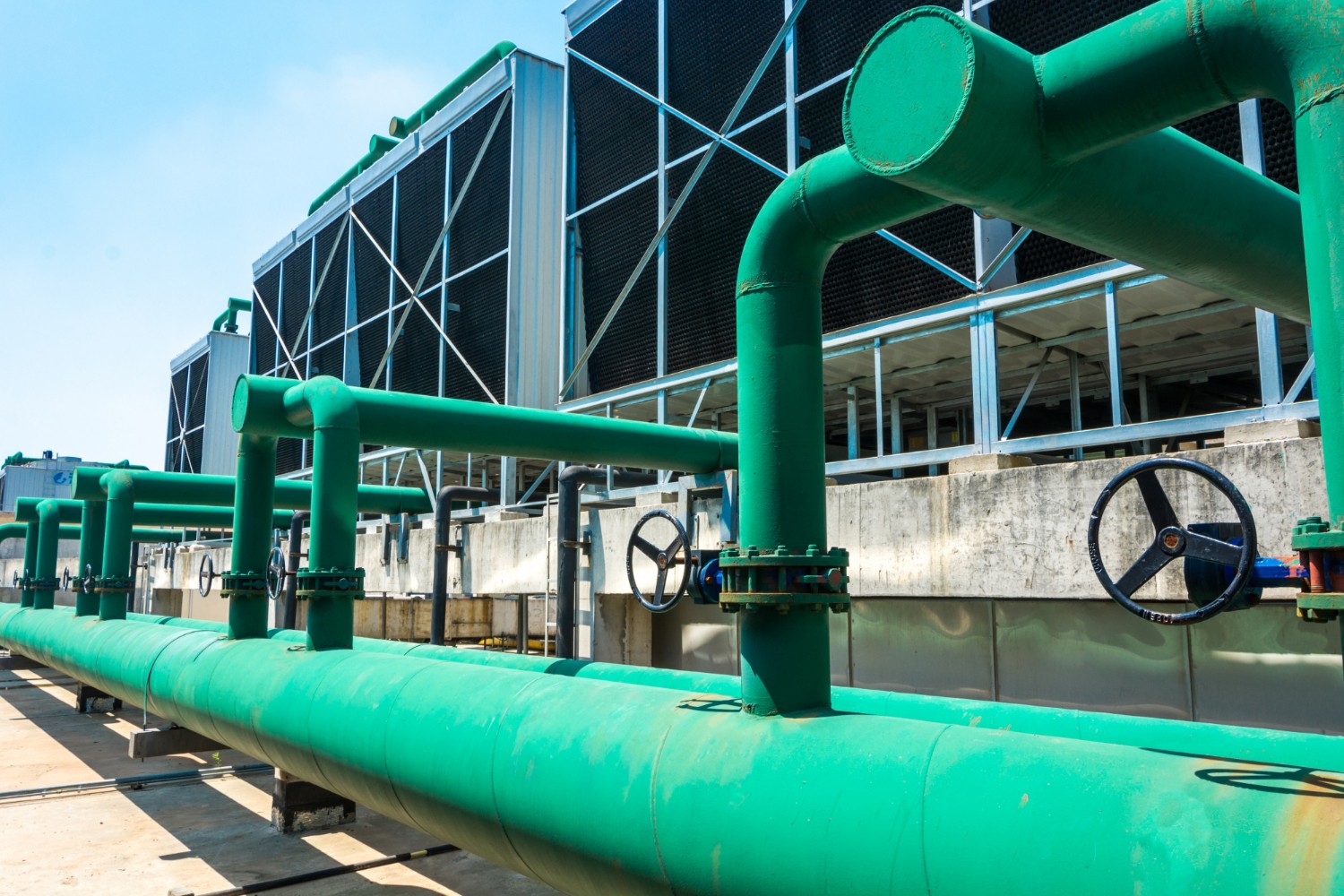Introduction
Aging infrastructure, unexpected failures, and inefficient maintenance are ongoing challenges for municipal water utilities worldwide. At Waltero, we recognize that traditional asset management strategies, primarily reactive and preventive maintenance, are no longer sufficient. With increasing demand for efficiency and reliability, utilities need a smarter, data-driven approach that can also reduce costs.
Let’s explore how AI-driven solutions, particularly those incorporating Edge AI and IoT sensors, are transforming water utility asset management software turning into proactive maintenance in water networks worldwide.
What is Water Utility Asset Management Software?
Water utility asset management software is a specialized digital tool designed to help utilities efficiently manage their physical assets, such as transmission substations, treatment plants, and distribution networks. This software tracks and monitors assets to ensure they are utilized and maintained properly, thereby reducing the risk of disruptions and outages. Unlike general asset management software, utility asset management software is tailored specifically for the utilities industry, which includes sectors like electric, gas, water, and telecommunications.
By leveraging this technology, utilities can streamline operations, enhance asset performance management, and ensure the reliable delivery of services.
Benefits of Asset Management Software
The benefits of asset management software for utilities are extensive and impactful. By adopting a digital platform, utilities can significantly improve asset performance management, reduce operational costs, and enhance customer satisfaction. Key advantages include:
- Reduced Reactive Maintenance: By shifting from reactive to proactive maintenance, utilities can extend the lifespan of their assets and minimize unexpected failures.
- Improved Asset Utilization: The software helps in optimizing the use of assets, thereby reducing downtime and increasing efficiency.
- Enhanced Regulatory Compliance: With built-in compliance features, utilities can easily adhere to regulatory requirements, reducing the risk of fines and penalties.
- Data-Driven Decisions: Real-time insights and analytics enable utilities to make informed decisions, improving overall operational efficiency.
- Customer Satisfaction: Reliable and efficient services lead to higher customer satisfaction, as there are fewer service interruptions and better resource management.

Alongside smart meter benefits, these last offer a strategic advantage by enhancing visibility, improving operational efficiency, and reducing unnecessary costs. By centralizing data and automating key processes, organizations can make more informed decisions and extend the lifespan of their assets.
The Challenges: Why Traditional Water Utility Maintenance Falls Short
Despite their longstanding use, traditional water utility maintenance methods often struggle to meet modern demands. Reactive approaches, limited data visibility, and aging infrastructure contribute to inefficiencies and increased risk. Understanding these challenges is crucial to appreciating the need for smarter, AI-driven solutions.
1. Aging Infrastructure & Water Loss
Municipal water utilities are dealing with aging pipes, pumps, and distribution systems. Up to 30% of treated water is lost due to leaks in deteriorating infrastructure, leading to billions in losses annually. In some regions, water losses reach 6 billion gallons per day, wasting valuable resources and revenue.
Effectively managing linear assets is crucial to addressing aging water infrastructure.
2. Reactive Maintenance Increases Costs
Many utilities operate on a “find and fix” model, waiting for failures before responding. This results in:
- Expensive emergency repairs
- Unplanned downtime
- Customer disruptions
Effective management of other assets related to water utilities can also improve operational efficiency and address challenges faced in the management of extensive utility networks.
Studies show that unplanned maintenance can cost three to five times more than predictive approaches.
3. Data Silos and Limited Visibility
Utilities often rely on outdated SCADA systems, GIS data, and spreadsheets that do not communicate effectively with one another, lacking the supervisory control needed to automate preventive maintenance work order management. The lack of real-time asset insights makes it difficult to predict failures accurately or prioritize maintenance efforts efficiently.
The Solution: AI-Powered Predictive Maintenance in Water Utilities
Modern asset management software integrates AI-driven analytics, IoT sensors, and Edge AI processing to continuously monitor infrastructure. These technologies provide:
- Water utility asset failure prediction—AI models analyze sensor data to forecast pipe failures before they happen. The integration of Supervisory Control and Data Acquisition (SCADA) Systems automates preventive maintenance work order management.
- Proactive maintenance for water networks—Utilities can plan repairs based on risk levels rather than reacting to failures.
- Optimized resource allocation—Predictive insights help prioritize maintenance, ensuring the highest-risk assets receive attention first.

Key Technologies Powering AI-Based Predictive Maintenance
AI-based predictive maintenance relies on a range of advanced technologies.
Here are the key technologies driving this transformative approach to maintenance.
- IoT Sensors: Pressure, flow, and acoustic sensors continuously monitor pipeline conditions, detecting leaks early.
- Edge AI Processing: Near real-time analytics processed on-site provide faster alerts and reduce data transmission costs.
- GIS & Digital Twins: AI integrates with GIS mapping to visually assess the risk of underground pipes and prioritize replacements. Leveraging digital tools to simulate and manage a water system enhances operational effectiveness and sustainability.
- Machine Learning Algorithms: AI continuously learns from past failures, improving accuracy in water utility asset failure predictions over time.
These tools work together to monitor equipment health, analyze vast amounts of data, and forecast potential failures before they occur. Enabling accurate and timely predictions.
7 Key Features of Effective Asset Management Software
Effective asset management software for utilities should encompass several key features to ensure comprehensive asset oversight and maintenance. These features include:
- Asset Condition Monitoring and Assessment: Continuous monitoring of asset conditions to detect issues early and assess overall health.
- Predictive Maintenance and Scheduling: Tools to predict potential failures and schedule maintenance activities proactively.
- Work Order Management and Tracking: Efficient management and tracking of work orders to streamline maintenance processes.
- Inventory Management and Procurement: Keeping track of inventory levels and managing procurement to ensure necessary parts and materials are available.
- Regulatory Compliance and Reporting: Features to help utilities comply with regulations and generate necessary reports.
- Data Analytics and Visualization: Advanced analytics and visualization tools to interpret data and gain actionable insights.
- Integration with GIS Data and Other Systems: Seamless integration with GIS data and other existing systems to provide a holistic view of the utility’s assets.

Together, these features empower utilities to move from reactive to proactive asset management. By leveraging comprehensive software solutions, organizations can enhance operational reliability, reduce costs, and make data-driven decisions that support long-term infrastructure sustainability.
Determining Asset Risk and Prioritizing Rehabilitation
Determining asset risk and prioritizing rehabilitation is a critical component of effective utility asset management. Asset management software aids utilities in:
- Assessing Asset Condition and Risk: Utilizing data-driven insights to evaluate the condition and risk associated with each asset.
- Prioritizing Rehabilitation and Maintenance: Based on risk and criticality, utilities can prioritize which assets need immediate attention and which can be scheduled for later.
- Developing Proactive Maintenance Plans: Creating maintenance plans that proactively address potential issues before they lead to failures.
- Optimizing Resource Allocation: Ensuring that resources are allocated efficiently, reducing costs, and improving overall asset management.
Implementing and Integrating Asset Management Software
Implementing and integrating asset management software requires a strategic approach to ensure success. Utilities should:
- Define Asset Management Strategy and Goals: Clearly outline the objectives and goals of the asset management strategy.
- Select the Right Software Solution: Choose a software solution that meets the utility’s specific needs and integrates seamlessly with existing systems.
- Develop a Data Management Plan: Ensure data quality and integrity by developing a robust data management plan.
- Provide Training and Support: Offer comprehensive training and support to ensure that users are proficient and can fully utilize the software.
- Monitor and Evaluate Effectiveness: Continuously monitor the software’s performance and make necessary improvements to enhance its effectiveness.
Case Studies: Real-World Impact of AI-Driven Asset Management
Reducing Water Main Breaks in the U.S.
A mid-sized U.S. water utility with over 1,000 miles of aging pipelines implemented AI-driven predictive maintenance. The results included:
- Fourfold reduction in water main failures
- $70 million saved in pipe replacement costs
- Improved efficiency in capital planning and maintenance scheduling
By integrating AI models with their GIS system, they prioritized high-risk pipes, reducing unnecessary repairs and focusing efforts where needed most.
Smart Leak Detection in Australia
Sydney Water adopted AI-powered leak detection and predictive analytics, significantly reducing sewer blockages and main failures. AI identified high-risk zones, allowing the utility to intervene before failures occurred, cutting repair costs and preventing service disruptions.
Waltero’s AI-Driven Approach to Water Utility Asset Management
At Waltero, we take predictive maintenance to the next level with our Edge AI-powered water asset monitoring solutions. Our approach includes:
- AI-Powered Asset Monitoring: Our W-Sensorretrofit onto existing water infrastructure, providing scheduled, near-real-time updates on asset conditions. This will allow effective water asset management and analysis, and ensure accurate data for evaluating risk exposure and prioritizing rehabilitation plans and utility digitization.
- Proactive Leak Detection: Edge AI analyzes flow and pressure anomalies to detect leaks early, minimizing non-revenue water loss.
- Plug-and-Play Installation: Unlike traditional systems requiring large-scale replacements, Waltero’s smart metering sensors are easy to install and integrate with existing infrastructure.
- Scalable Solutions: Designed for utilities of all sizes, our Mímir cloud platform services are designed to merge, manage, and analyze data from the sensors effortlessly. It is adaptable to each utility’s unique needs, making proactive maintenance of water networks more accessible and cost-effective.

Waltero’s AI-driven solutions transform how utilities manage their water infrastructure—delivering smarter insights, faster responses, and greater efficiency. Whether you’re a small municipality or a large utility provider, our scalable, easy-to-integrate technology empowers you to stay ahead of maintenance challenges.

Ready to future-proof your water network? Contact us today to explore our Waltero Exploratory Kit and experience the power of real-time energy insights. Schedule a demo or learn more about how we can support your utility’s digital transformation.
The Future of Water Utility Asset Management
AI-powered predictive maintenance makes a difference. By leveraging utility asset management, utilities can transition from reactive repairs to proactive problem-solving. This technology helps prevent water main breaks, abnormal resource consumption, optimizes resources, enhances service reliability, and significantly reduces downtime in water systems.
Future Trends: Where Edge AI & is Taking Water Utilities
Looking ahead, AI will continue to drive innovation in water management through:
- Enhanced predictive accuracy—Machine learning models will refine predictions, reducing false positives and improving maintenance scheduling.
- Smart city integrations—AI-powered water systems will integrate with energy grids, transportation, and urban planning for holistic sustainability.
- Automation—Future AI-driven systems will autonomously adjust pressure levels, detect contamination, and optimize pump operations.
- Regulatory compliance—Governments are increasingly requiring utilities to reduce water loss and improve efficiency, making AI-driven solutions essential.
The future of water utilities is intelligent, interconnected, and automated with Edge AI at the heart of this transformation. As cities grow smarter and sustainability becomes non-negotiable, utilities that embrace AI will lead the charge toward resilient, data-driven infrastructure.
Conclusion
The future of water utility asset management software is here, and it is AI-powered. With utilities facing aging infrastructure, rising costs, and increasing regulatory pressure, adopting AI predictive maintenance for water infrastructure is no longer optional—it is essential.
At Waltero, we are committed to helping utilities transition to smarter, more efficient asset management. By implementing AI-powered solutions, municipalities can prevent water main breaks, reduce downtime in municipal water systems, and improve overall reliability.
Johan Nordén – Vice President Research & Development, Waltero
With a PhD in Optics and Solar Energy and years of applied experience in computer vision, Johan guides Waltero’s technical roadmap for AI-powered analytics across edge, on-prem, and cloud environments. His deep knowledge of imaging systems and optical technologies ensures that our monitoring and vision solutions deliver unmatched precision and operational impact.

